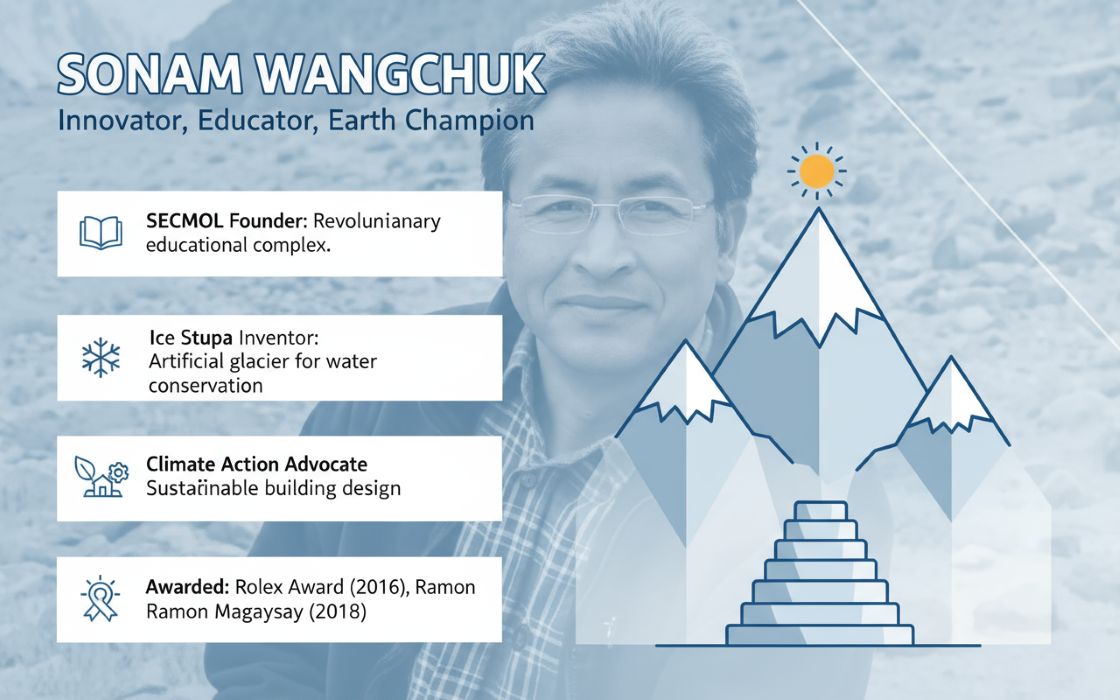Nestled in the remote regions of the Chambal Valley, the villages of Daang in Rajasthan tell a remarkable story of resilience and transformation, all thanks to the concerted efforts of the DS Group, in collaboration with Gram Gaurav Sansthan (GGS). The region, once struggling with severe water scarcity, has witnessed a profound change, driven by innovative water conservation initiatives that have not only alleviated the immediate water crisis but also transformed the livelihoods of its people.
The Water Crisis in India: A National Challenge
India faces one of the most severe water crises globally, with over 600 million people living under high water stress, according to reports from organizations like SIWI, Water.org, and UNICEF. The country’s rapid population growth, coupled with unregulated water extraction, has led to a depletion of groundwater reserves. Rajasthan, in particular, has been grappling with erratic rainfall and insufficient groundwater replenishment, making water access a critical concern, especially in rural and arid regions like the Chambal Valley.
In the past, villagers in Daang had to walk over 5 kilometers to fetch water, limiting their agricultural potential and hindering daily life. The lack of reliable water sources was a barrier to cultivating crops, which in turn led to poor livelihoods for many families in the region.
DS Group’s Water Conservation Efforts: A Game-Changer
In response to the dire need for water solutions, DS Group’s comprehensive water conservation program led under the leadership of Mr. Prabhakant Jain, Head, CSR - DS Group, initiated in partnership with Gram Gaurav Sansthan, has had a transformative effect on the region. By integrating modern techniques with traditional wisdom, the project has successfully mitigated the water scarcity issues in Daang and surrounding areas. The data from DS Group’s initiatives paints a clear picture of the scale of impact:
- Pagaras (Rainwater Storage Structures): 32
- Pokhars (Ponds for Water Conservation): 60
- Village Ponds Restored: 14
- Solar Powered Lift Irrigation Systems: 21
These structures have not only addressed the immediate water needs of the community but also improved the agricultural prospects of the farmers. The increased availability of water has allowed them to grow multiple crops, enhance food security, and generate better income for their families.
Revival of Traditional Knowledge
GGS, under the leadership of Jagdish Gurjer, a seasoned practitioner in natural resource management, played a pivotal role in reviving indigenous water conservation techniques. Their efforts included the restoration of community ponds and the construction of water-harvesting structures, all built with active participation from the local community. This approach not only addressed immediate water needs but also empowered villagers by involving them in the planning and execution of these projects.
Watch the Transformation of Daang
Transformation of lives in Karauli, Rajasthan through DS Group's Water Economic Zone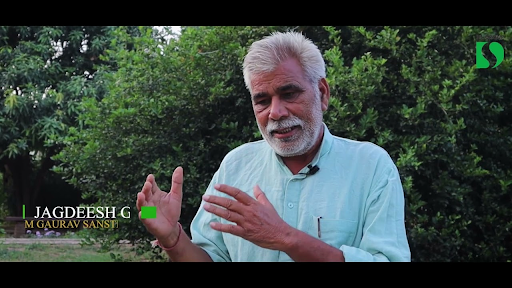
Local Voices: The Heart of the Story
The real transformation is seen in the stories of the villagers themselves. In the images, we see women like the two villagers from Daang, who once spent hours collecting water, now engaged in productive activities like education and other livelihood opportunities. Their expressions tell the story of the challenges they’ve overcome and the new opportunities they now have thanks to the availability of water.
Jagdish Gurjer, the driving force behind this initiative, has spent over 33 years working with the community in this region. Under his guidance, GGS has facilitated a grassroots movement where local community members take ownership of the water resources, ensuring long-term sustainability. The project has created a network of community institutions that manage and maintain the water structures. 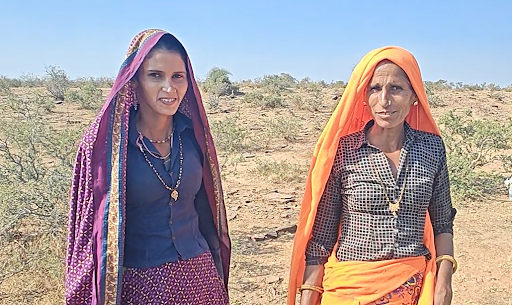
Local Women – Faces of Empowerment The two local women in this image once struggled with the burden of fetching water. Today, they can engage in other productive tasks, a clear symbol of empowerment.
Community Empowerment and Agricultural Transformation
The availability of water brought multiple benefits to the region, with one of the most notable being the transformation in agricultural practices. With reliable water access, farmers started cultivating multiple crops, including vegetables and fruits, improving food security and generating new income streams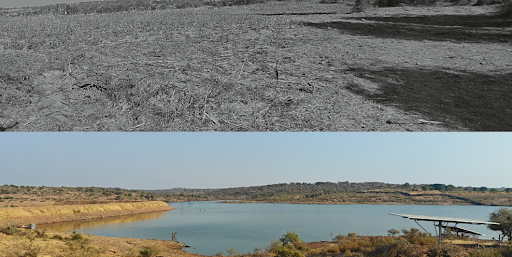 . The introduction of solar-powered lift irrigation systems also enabled farmers to irrigate their crops sustainably, reducing dependence on traditional, costly methods.
. The introduction of solar-powered lift irrigation systems also enabled farmers to irrigate their crops sustainably, reducing dependence on traditional, costly methods.
In the images below, we see how the agricultural landscape of Daang has shifted dramatically. Where there was once dry, barren land, lush fields of crops like pumpkins (see the farmer holding the pumpkin) now flourish, showcasing the true potential of sustainable water management.
Watering Agriculture: A New Era of Crop Cultivation
The impact of reliable water sources on agriculture has been nothing short of revolutionary. The villagers are now cultivating multiple crops, including vegetables and fruits, leading to better food security and higher incomes. Pumpkins, tomatoes, and other vegetables are now a common sight in the fields, a stark contrast to the previous barren landscape.
With the introduction of solar-powered irrigation systems, farmers can irrigate their crops more sustainably, reducing their dependence on costly and inefficient traditional methods. The changes in the agricultural landscape are a clear demonstration of how water can turn the fortunes of a region around.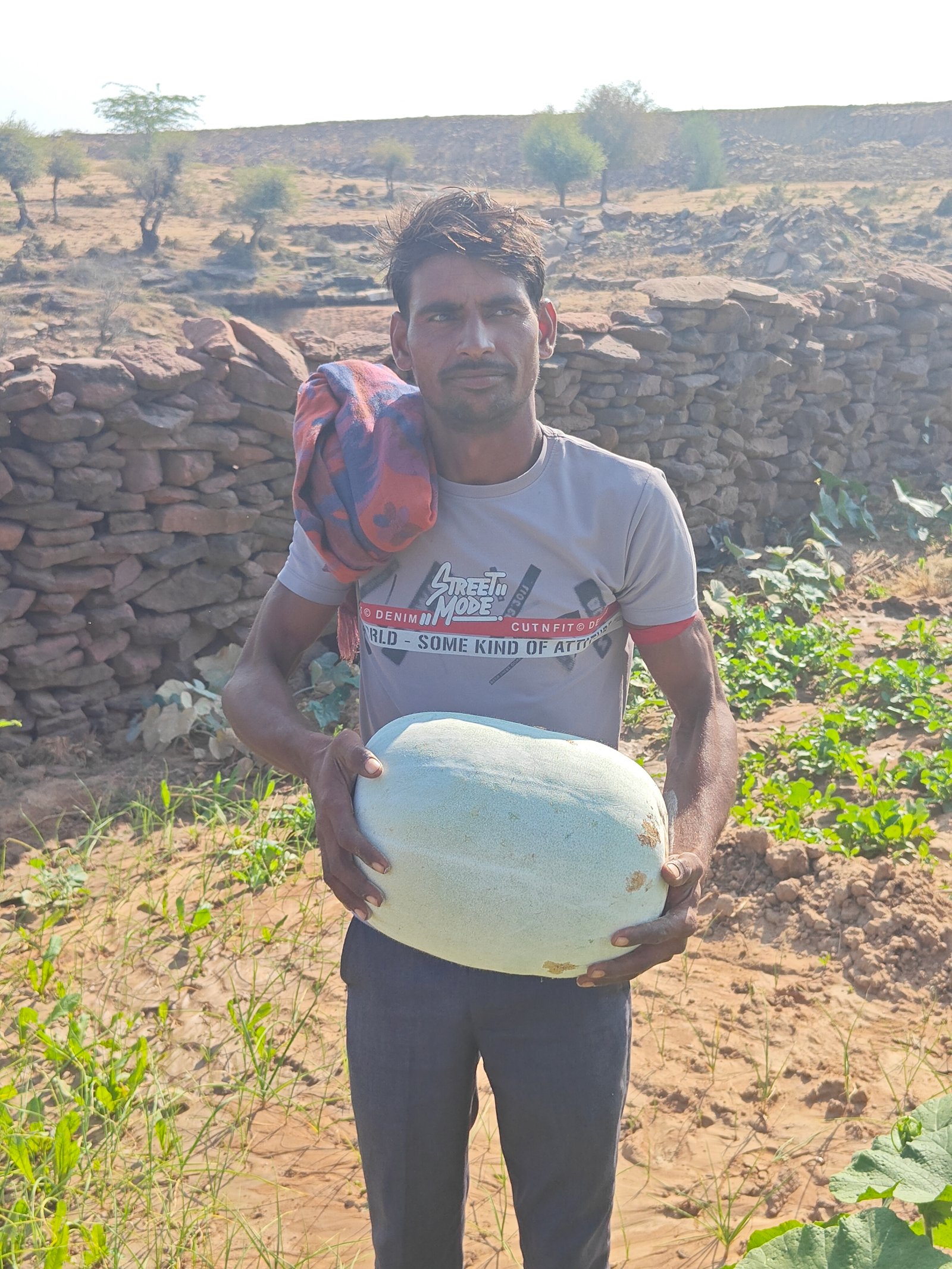
A Farmer with His Harvest - This farmer is holding a large pumpkin, grown thanks to the availability of water from the newly established irrigation systems. The thriving crops now symbolize prosperity in Daang.
A Glimpse Into the Future: A Sustainable Daang
The journey of Daang is far from over. While the water crisis has been significantly reduced, the focus is now on maintaining and scaling these efforts. The solar-powered irrigation systems and community-led water management practices set an example for other drought-prone regions in India.
In the image showing the community gathering, the sense of solidarity and collective action is evident. The locals, from farmers to women and children, have not just become beneficiaries of the water resources but active participants in their conservation and management. This shift is essential for ensuring that these changes remain sustainable for generations to come.
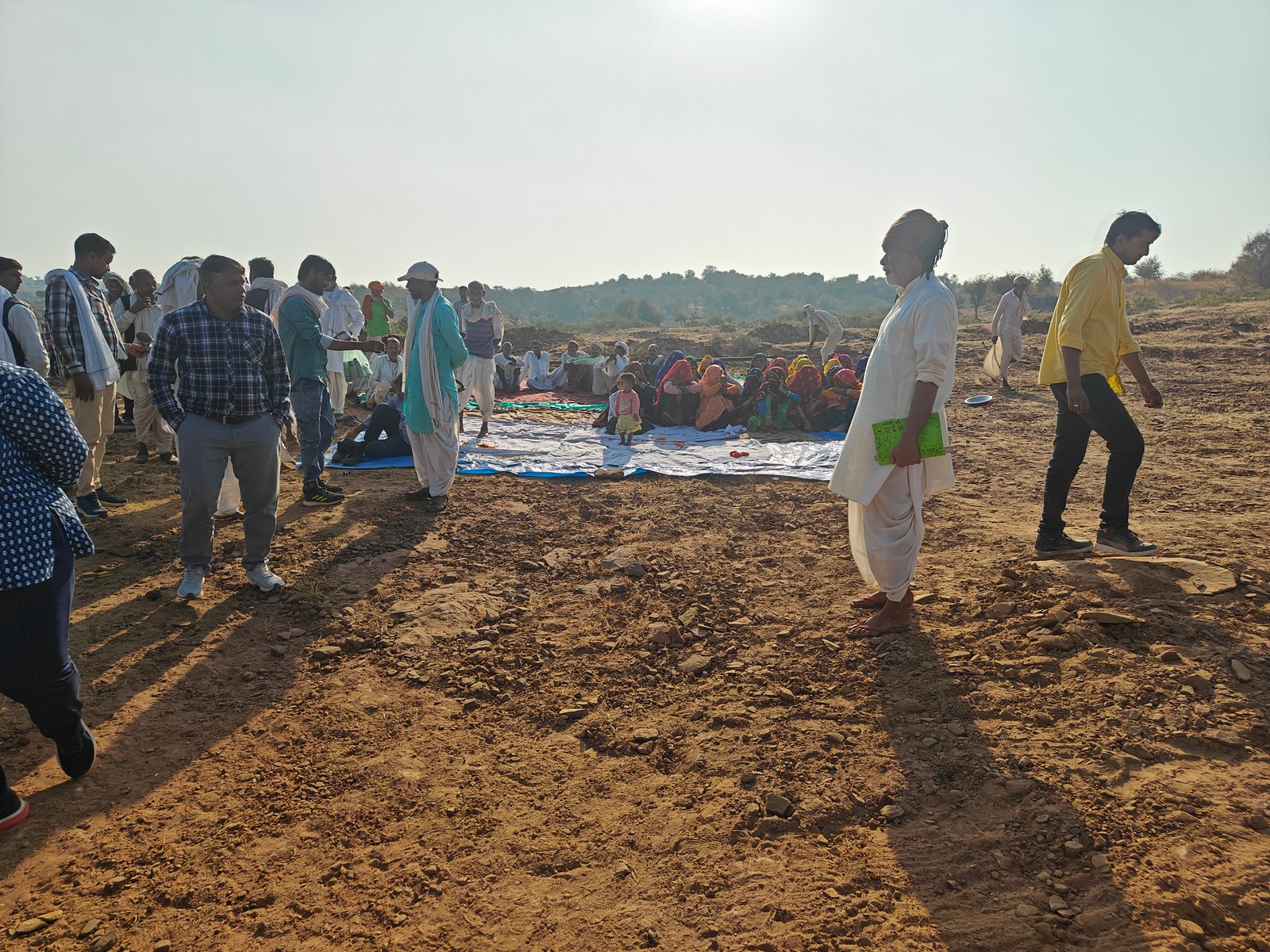 Community Gathering – Strength in Unity This image shows the local community coming together during a meeting to discuss the water conservation project. Their sense of unity is a cornerstone of the initiative’s success.
Community Gathering – Strength in Unity This image shows the local community coming together during a meeting to discuss the water conservation project. Their sense of unity is a cornerstone of the initiative’s success.
Conclusion: A Model for the Future
The story of Daang and its water conservation efforts under DS Group and Gram Gaurav Sansthan is a model of success, not just in water conservation but in community empowerment and agricultural transformation. It offers hope to other regions in India and across the world that face similar water challenges.
As the village continues to thrive with these sustainable water practices, we can only look forward to more success stories from the heart of Rajasthan's Chambal Valley.
The success of the DS Group’s water conservation initiative in Daang is a beacon of hope for other regions facing similar water crises. By combining modern techniques with traditional wisdom, and empowering local communities, Daang is a living example of how sustainable water management can change lives.
As the community continues to flourish, the lessons learned in Daang can serve as a roadmap for sustainable development, not just in Rajasthan but across India.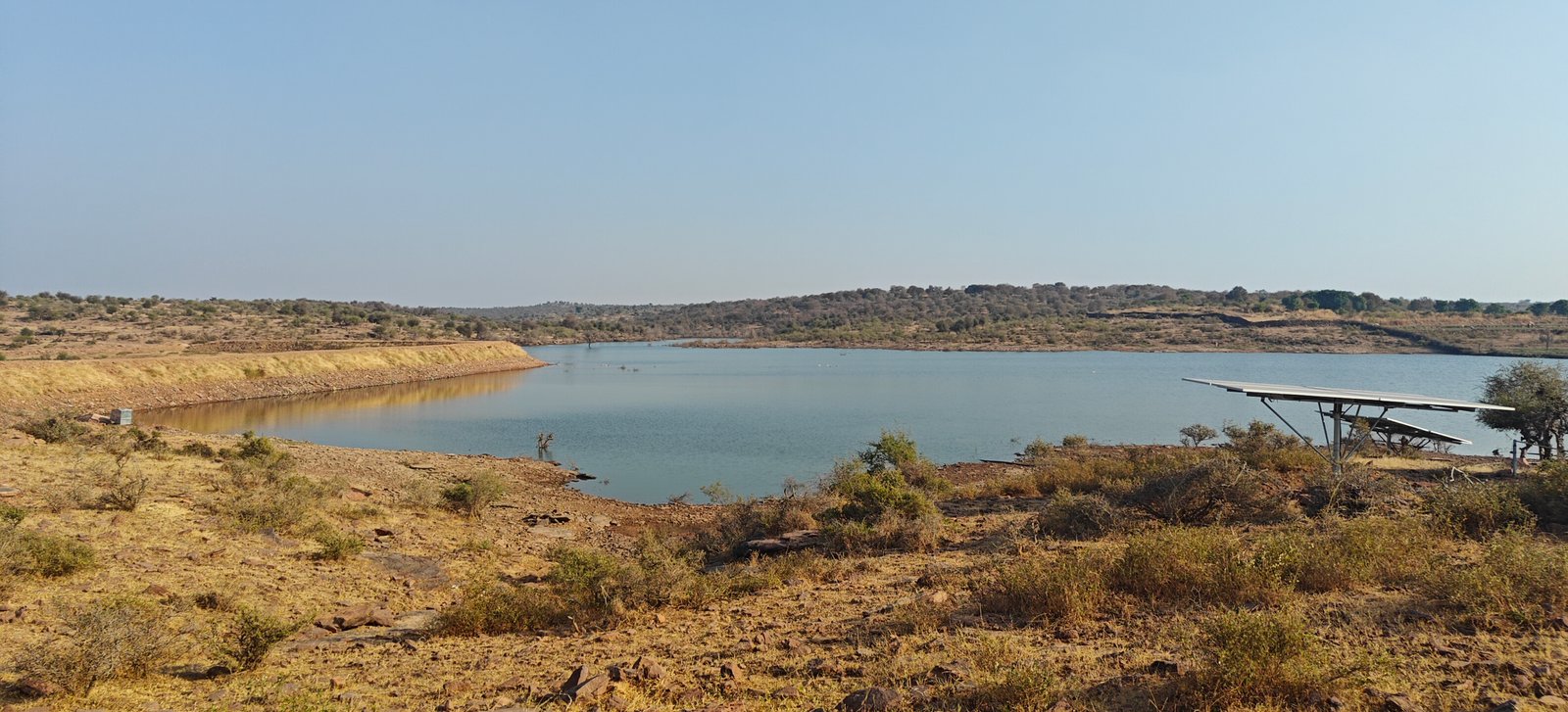 The Future of Daang – Clean, Sustainable Water The image captures the clean, abundant water resources in Daang, a result of concerted community efforts and sustainable water management. This water, once a distant hope, is now a reality for the people of Daang.
The Future of Daang – Clean, Sustainable Water The image captures the clean, abundant water resources in Daang, a result of concerted community efforts and sustainable water management. This water, once a distant hope, is now a reality for the people of Daang.



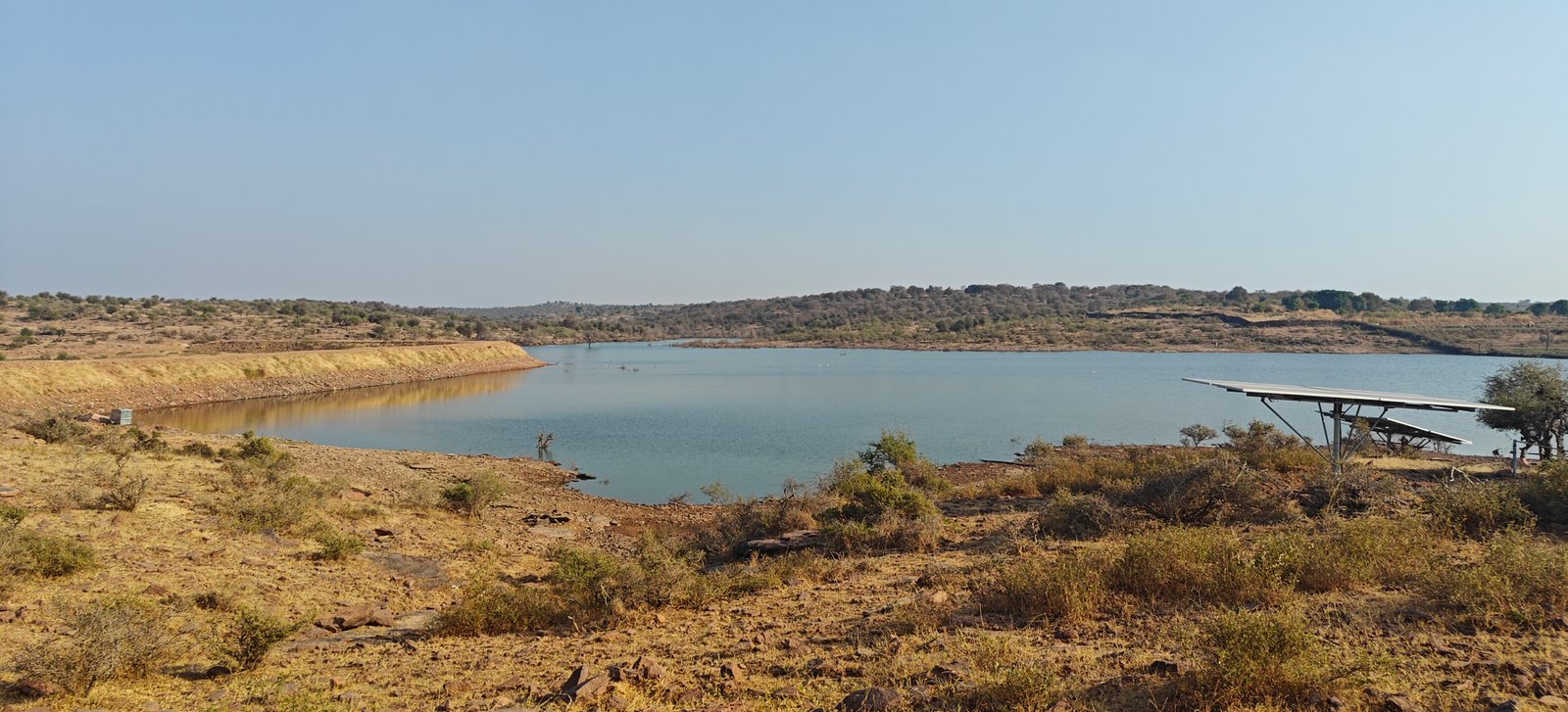


 . The introduction of solar-powered lift irrigation systems also enabled farmers to irrigate their crops sustainably, reducing dependence on traditional, costly methods.
. The introduction of solar-powered lift irrigation systems also enabled farmers to irrigate their crops sustainably, reducing dependence on traditional, costly methods.
 Community Gathering – Strength in Unity This image shows the local community coming together during a meeting to discuss the water conservation project. Their sense of unity is a cornerstone of the initiative’s success.
Community Gathering – Strength in Unity This image shows the local community coming together during a meeting to discuss the water conservation project. Their sense of unity is a cornerstone of the initiative’s success.  The Future of Daang – Clean, Sustainable Water The image captures the clean, abundant water resources in Daang, a result of concerted community efforts and sustainable water management. This water, once a distant hope, is now a reality for the people of Daang.
The Future of Daang – Clean, Sustainable Water The image captures the clean, abundant water resources in Daang, a result of concerted community efforts and sustainable water management. This water, once a distant hope, is now a reality for the people of Daang.
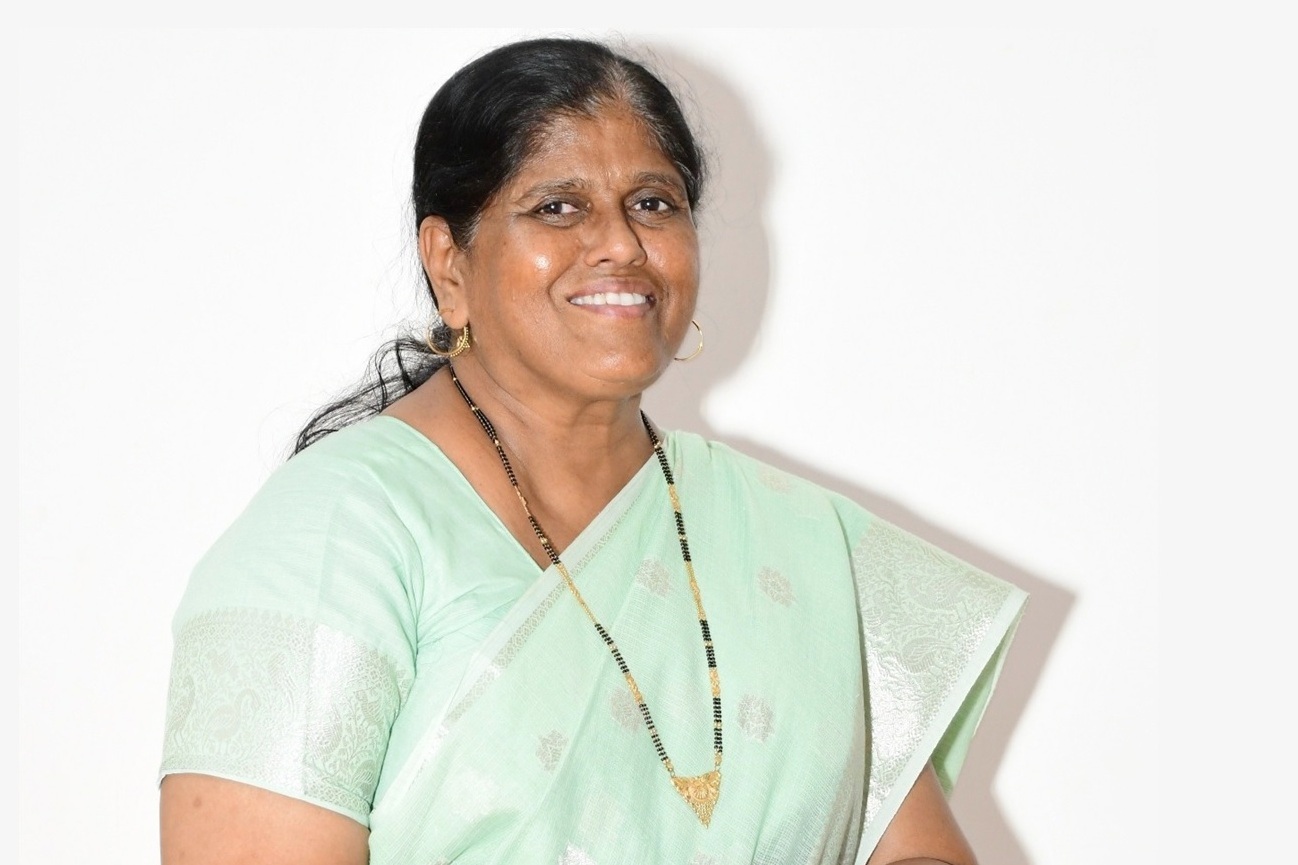



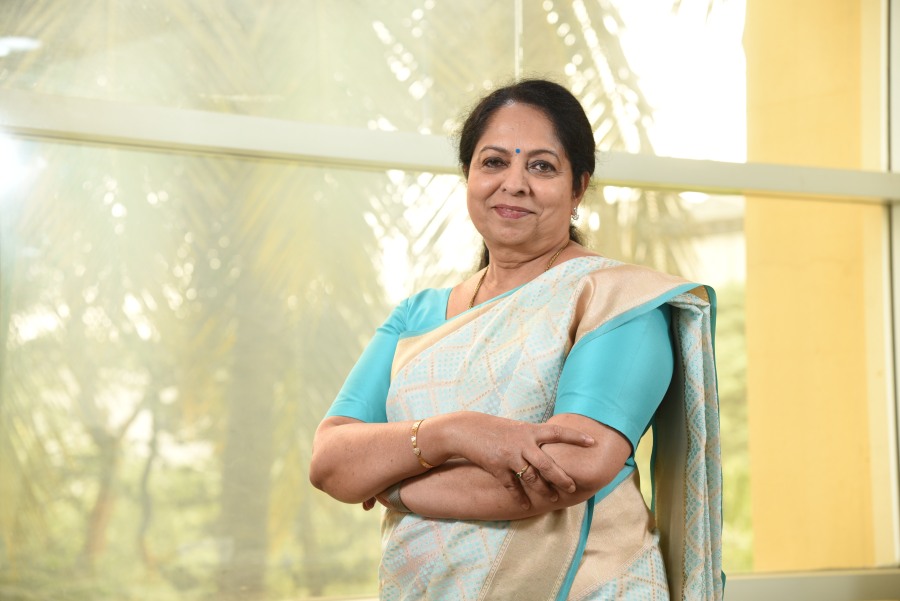
.jpg)

